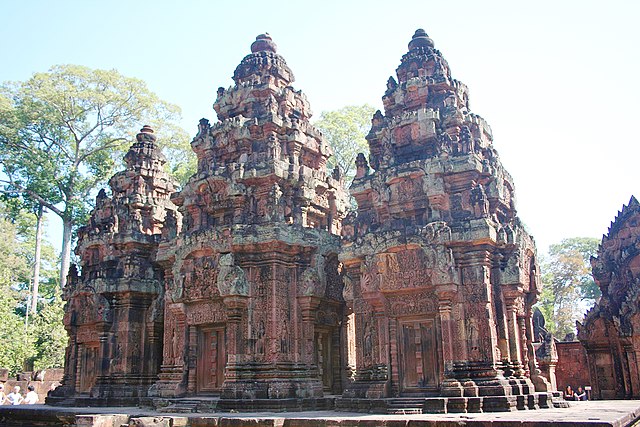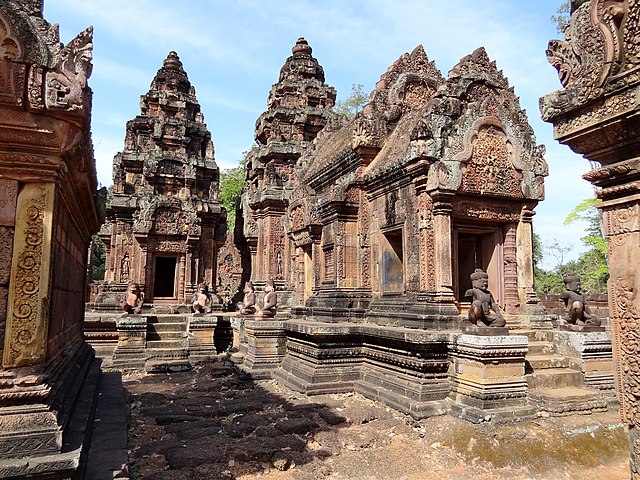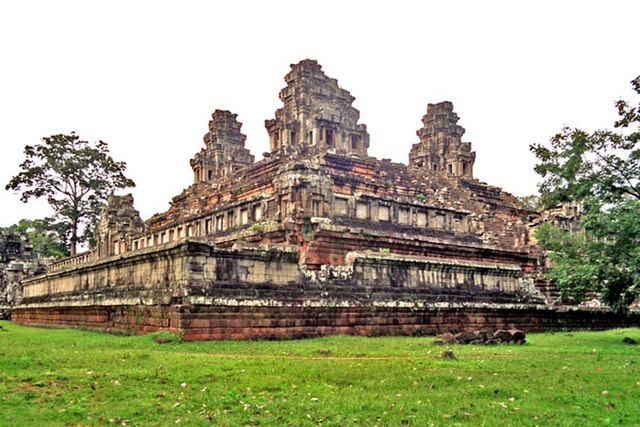Sdok Kok Thom, or Sdok Kak Thom, is an 11th-century Angkorian temple in present-day Thailand, located about 34 kilometres (21 mi) northeast of the Thai border town of Aranyaprathet. The temple is in Khok Sung District, Sa Kaeo Province, near the village of Ban Nong Samet. It is regarded as the largest Angkorian temple in eastern Thailand. The temple was dedicated to the Hindu god Shiva. Constructed by a prominent priestly family, Sdok Kok Thom is the original site of one of the most illuminating inscriptions left behind by the Khmer Empire, which ruled much of Southeast Asia from the end of the 9th century to the 15th century.
Sdok Kok Thom
Central sandstone tower of Sdok Kok Thom, viewed from north. Photo c. 1980
Court's eastern gate, or gopura, exterior view. Note carved Naga heads at base of doorway. Holy image at left is from a later period. Photo c. 1980
Northeastern library. Photo c. 1980
The Khmer Empire was a Hindu-Buddhist empire in Southeast Asia, centered around hydraulic cities in what is now northern Cambodia. Known as Kambuja by its inhabitants, it grew out of the former civilisation of Chenla and lasted from 802 to 1431. Historians call this period of Cambodian history the Angkor period, after the empire's most well-known capital, Angkor. The Khmer Empire ruled or vassalised most of mainland Southeast Asia and stretched as far north as southern China. At its peak, the Empire was larger than the Byzantine Empire, which existed around the same time.
Temple of Banteay Srei, built 967 A.D.
Bakong, one of the earliest temple mountains in Khmer architecture
Banteay Srei, a 10th-century Cambodian temple dedicated to the Hindu god Shiva
Ta Keo, a state temple built around the year 1000








